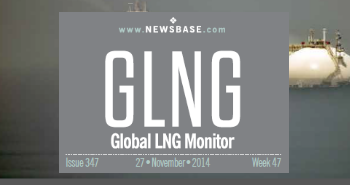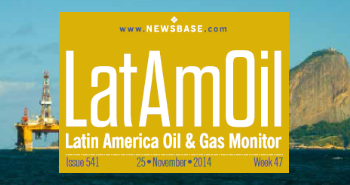Golar LNG approves pioneering Argentina FLNG project to tap Vaca Muerta gas

Argentina hopes to become an LNG exporter later this decade
WHAT Golar LNG has chartered its FLNG Hilli Episeyo vessel to tap Vaca Muerta gas
WHY The landlocked Vaca Muerta is the world's second-largest shale gas field
WHAT NEXT But the region faces LNG competition from established exporters such as the US and Qatar
Argentina’s LNG export plans have taken a step forward even as scepticism remains.
Golar LNG has announced the final investment decision (FID) for the 20-year re-deployment charter of its FLNG Hilli Episeyo vessel to Southern Energy SA (SESA) offshore Argentina, marking a significant step in monetising Argentina's vast Vaca Muerta shale gas resources.
"The vessel will be chartered to Southern Energy SA offshore Argentina,” the firm announced in an official press statement. “In addition, Golar and SESA have signed definitive agreements for a 20-year charter for the MKII FLNG, currently under conversion at CIMC Raffles shipyard in Yantai, China. The MKII FLNG charter remains subject to FID and the same regulatory approvals as granted to the FLNG Hilli project, expected within 2025.”
The development involves deployment of two floating liquefied natural gas (FLNG) units – Golar’s Hilli Episeyo and MKII – off the coast of Río Negro province, with planned export capacity of 6mn tonnes per year (tpy).
The Hilli FLNG, with a nameplate capacity of 2.45mn tpy, is expected to begin operations by end-2027. The MKII unit, currently under conversion in China, is expected to go online in 2028 with a capacity of 3.5mn tpy.
Together, these vessels represent 5.95mn tpy of nameplate capacity in what Golar describes as one of the world's largest FLNG development projects. Both units will include commodity-linked tariff components representing 25% of free-on-board (FOB) prices above $8/mmBtu, potentially adding $13.7bn to Golar's earnings backlog over the contract period, Offshore Energy reported.
"Golar is excited to partner with the leading gas producers in Argentina in establishing the country as an LNG exporter," Golar's CEO Karl Fredrik Staubo said. "The vast resources of the Vaca Muerta formation will provide the LNG market with a reliable long-term source of attractive LNG supplies and a significant contribution to Argentina."
SESA, the company formed to enable Argentina's LNG exports, is owned by a consortium including Pan American Energy (30%), state-owned YPF (25%), Pampa Energia (20%), Harbour Energy (15%) and Golar itself (10%).
The gas producers have committed to supply their proportional share of natural gas to the FLNGs under gas sales agreements at a fixed price per mmBtu with US-CPI adjustments.
Online in 2027
Golar LNG’s project is expected to be online by 2027.
The Vaca Muerta is the world's second-largest shale gas and fourth-largest shale oil basin. But the land-locked Vaca Muerta play does not yet have LNG export capacity, although gas is exported by pipeline northeast to Buenos Aires and Santa Fe provinces via the Perito Francisco Pascasio Moreno pipeline.
Golar LNG’s decision comes after regional governors from provinces encompassing the Vaca Muerta travelled to Houston, Texas, for the Offshore Technology Conference in search of fresh investments, making the FID a well-timed decision.
Vaca Muerta output is growing
Vaca Muerta, Argentina’s premier shale play, experienced substantial growth in oil and gas production in 2024, driving increased export revenues and setting the stage for future LNG exports, according to a Rystad Energy report in February.
Oil production surged by 27% and gas by 23% in 2024 compared with 2023, with crude output reaching 442,000 barrels per day (bpd) by year-end. Dry gas production peaked above 70.8mn cubic metres per day in mid-year before dipping slightly due to seasonal demand shifts.
Tecpetrol and YPF led with a combined 45% share of gas production in 2024, but independent operators such as Pluspetrol, Pampa Energia and PAN played key roles in overall growth, said Rystad. YPF and Vista Energy, the dominant producers, accounted for more than 55% and 15% of shale oil output.
Pipelines are needed
However, some have been sceptical of LNG exports until more infrastructure is built.
As of November, Argentina could move about 130 mcm of gas per day, while an additional 20-40 mcm a day has been needed to meet current domestic and regional demand, Daniel Ridelener, executive president of the country's largest gas pipeline operator TGN, told Reuters.
He said that pipeline capacity would need to expand by 40-130 mcm to support the exports of LNG.
TGS, the second-largest pipeline operator, plans to boost capacity of out Vaca Muerta by 14 mcm a day with a $700mn project, said the news service. Additionally, a $2bn plan to expand a state-owned pipeline by 20 mcm a day is to go to out to international tender, said Reuters.
Separate from Golar LNG, YPF is planning Argentina LNG, a large proposed $55bn onshore project in partnership with Malaysia's Petronas. It would have an output of 30mn tonnes a year by 2032.
Sceptics of Argentina’s LNG export plans have noted that last month, Malaysia-based Petronas pulled out of Vaca Muerta drilling by selling its 50% stake in the high-output La Amarga Chica oil field to Vista Energy for around $1.5bn. YPF has said it will pursue the project regardless of a Petronas pull-out.
Competition
The Vaca Muerta faces competition from established and stable LNG exporters such as the US and Qatar. Some analysts say its FLNG plans are more realistic than a super-project such as Argentina LNG.
The Golar FLNG charter represents a potential game-changer for Argentina's energy sector and its shale gas production in particular. Tapping into the vast resources of the massive Vaca Muerta shale formation, the project could position the country to capitalise on the growing global demand for LNG, thereby bolstering Argentina’s energy industry along with its economic growth at large.
However, the project's success will ultimately depend on President Javier Milei administration’s ability to maintain political and regulatory stability in Argentina's evolving economic landscape, particularly as its controversial austerity measures continue to take form.
In April, the International Monetary Fund (IMF) approved a $20bn four-year loan to the South American country, and the Inter-American Development Bank and World Bank have added another $22bn in financing, said a report by the Atlantic Council. In response, Argentina has agreed to ease currency and capital controls, hoping to encourage investment including from overseas.



Follow us online